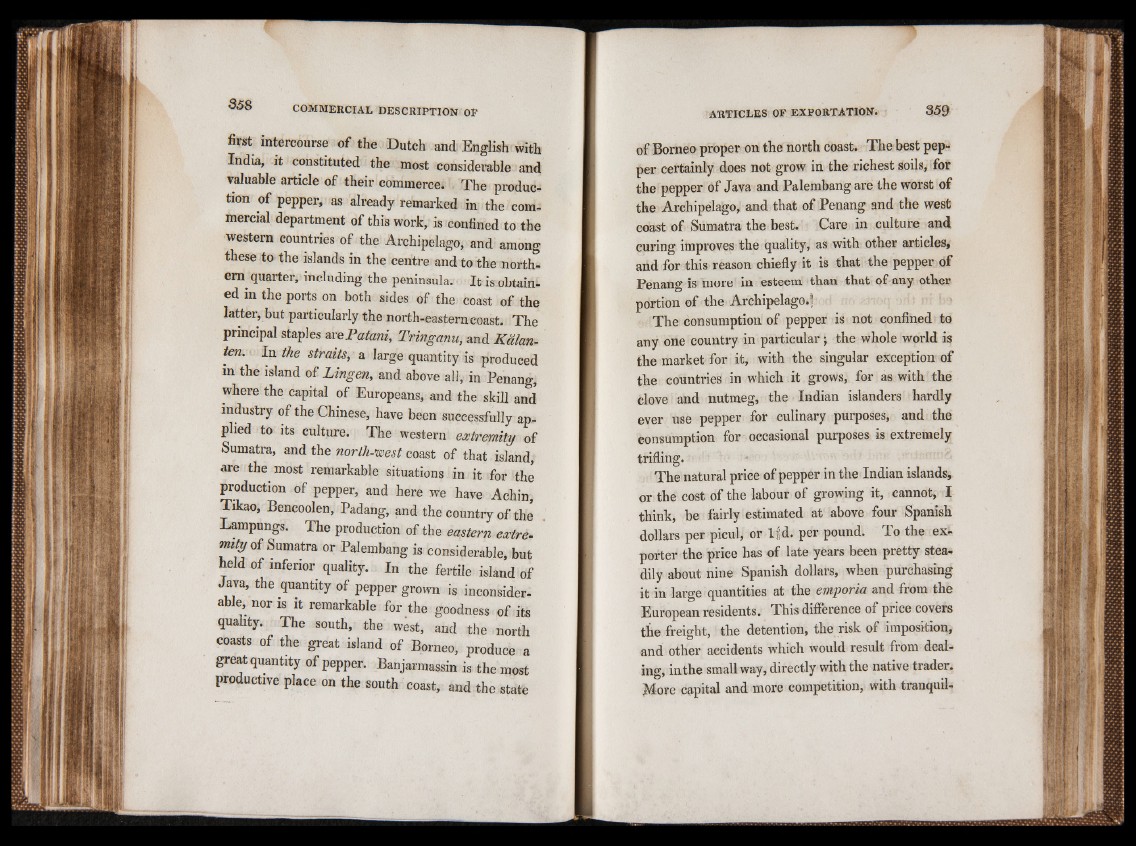
first intercourse of the Dutch and English with
India, it constituted the most considerable and
valuable article of their commerce. The production
of pepper, as already remarked in the commercial
department of this work, is confined to the
western countries of the Archipelago, and among
these to the islands in the centre and to the northern
quarter, including the peninsula; It is obtained
in the ports on both sides of the coast of the
latter, but particularly the north-eastern coast. The
principal staples arePatani, Tringanu, and Kâlan-
ten. In the straits, a large quantity is produced
m the island of Lingen, and above all, in Penang,
where the capital of Europeans, and the skill and
industry of the Chinese, have been successfully applied
to its culture. The western extremity of
Sumatra, and the north-west coast of that island,
are the most remarkable situations in it for the
production of pepper, and here we have Achin,
Tikao, Bencoolen, Padang, and the country of the
Lampungs. The production of the eastern extremity
of Sumatra or Palembang is considerable, but
held of inferior quality. In the fertile island of
Java, the quantity of pepper grown is inconsiderable,
nor is it remarkable for the goodness of its
quality. The south, the west, and the north
coasts of the great island of Borneo, produce a
great quantity of pepper. Banjarmassin is the most
productive place on the south coast, and the state
of Borneo proper on the north coast. The best pepper
certainly does not grow in the richest soils, for
the pepper of Java and Palembang are the worst of
the Archipelago, and that of Penang and the west
coast of Sumatra the best. Care in culture and
curing improves the quality, as with other articles,
and for this reason chiefly it is that the pepper of
Penang is more in esteem than that of any other
portion of the Archipelago.!
The consumption of pepper is not confined to
any one country in particular; the whole world is
the market for it, with the singular exception of
the countries in which it grows, for as with the
clove and nutmeg, the Indian islanders hardly
ever use pepper for culinary purposes, and the
consumption for occasional purposes is extremely
trifling.
The natural price of pepper in the Indian islands,
or the cost of the labour of growing it, cannot, I
think, be fairly estimated at above four Spanish
dollars per picul, or l|d . per pound. To the exporter
the price has of late years been pretty steadily
about nine Spanish dollars, when purchasing
it in large quantities at the emporia and from the
European residents. This difference of price covers
the freight, the detention, the risk of imposition,
and other accidents which would result from dealing,
in the small way, directly with the native trader.
More capital and more competition, with tranquil